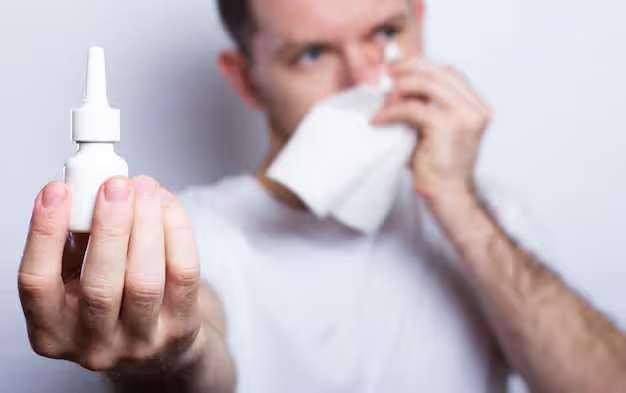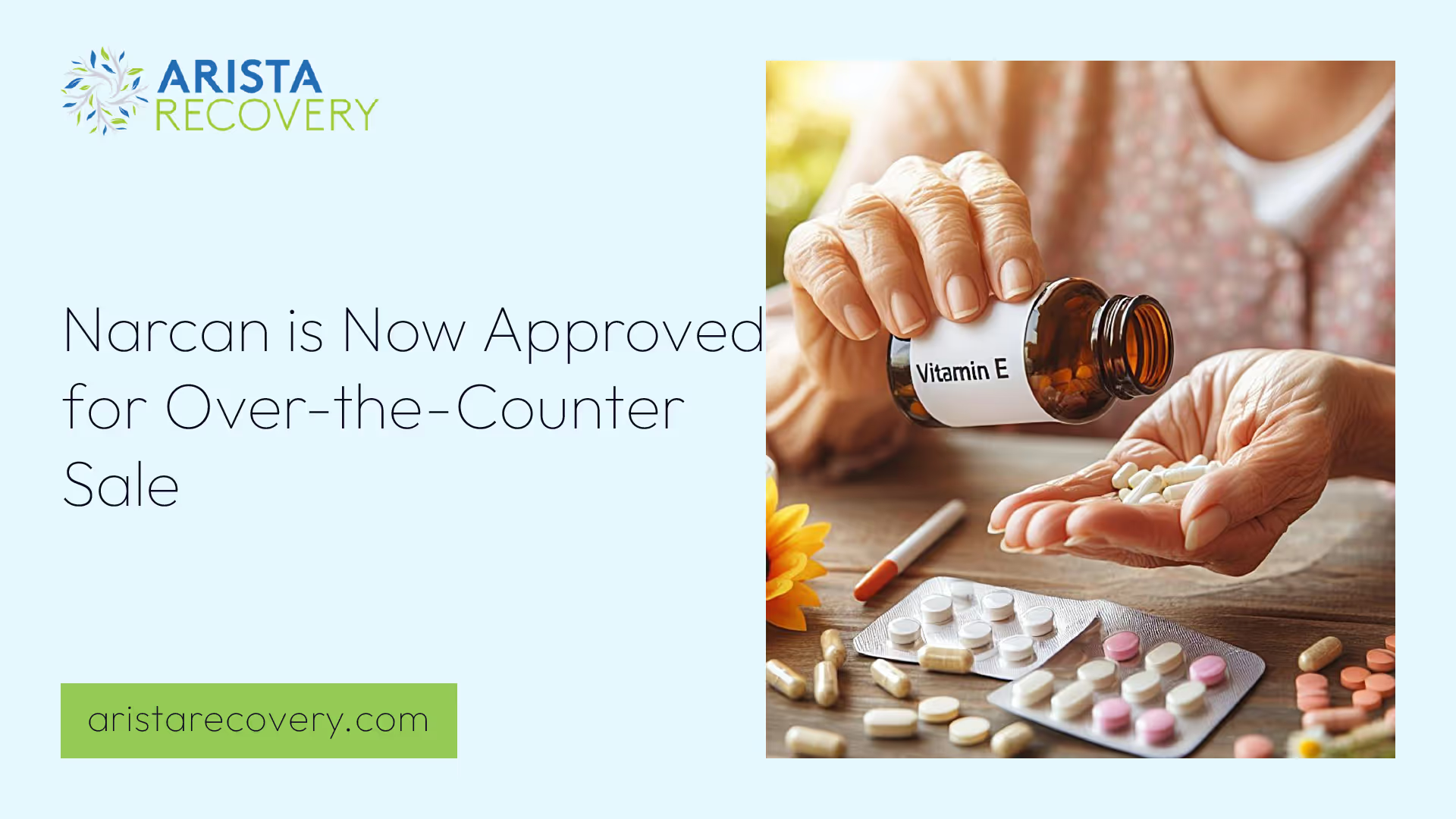Narcan is Now Approved for Over-the-Counter Sale


The OTC Approval of Narcan
The approval of Narcan for over-the-counter (OTC) sale marks a significant milestone in the fight against opioid overdoses. This decision aims to increase access to naloxone, a life-saving medication that can reverse the effects of opioid overdoses.
Federal Recommendations for OTC Narcan
Two federal panels of addiction experts unanimously advocated for making Narcan widely available without a prescription. This recommendation reflects the urgency of addressing rising drug fatalities. The U.S. Food and Drug Administration (FDA) is set to approve Narcan, a 4 milligram (mg) naloxone hydrochloride nasal spray, for OTC use. The approval was officially granted on March 29, 2023, allowing Narcan to be sold in various venues, including drug stores, grocery stores, and online platforms.
This move is expected to make Narcan available in more accessible locations such as vending machines, schools, convenience stores, and supermarkets by summer, thereby enhancing community safety.
Impact on Drug Fatality Rates
The availability of Narcan over-the-counter is anticipated to have a positive impact on drug fatality rates. By increasing accessibility to this life-saving medication, more individuals will have the opportunity to respond effectively to opioid overdoses.
YearEstimated Opioid Overdose Deaths202093,3312021107,6222022109,000 (projected)
The rising trend in overdose deaths highlights the critical need for effective interventions like Narcan. By equipping more people with naloxone, the potential to save lives increases significantly. The aim is to empower individuals, families, and communities to act swiftly during overdose emergencies, ultimately reducing the number of fatalities linked to opioid use.

Accessibility and Availability
The accessibility and availability of Narcan (naloxone) as an over-the-counter (OTC) medication are crucial for addressing the opioid crisis. Understanding the distribution channels, cost implications, and regulatory outlook for generic alternatives is vital for ensuring that individuals in need can obtain this life-saving medication.
OTC Narcan Distribution Channels
With the expected FDA approval for Narcan's OTC sale, it is anticipated that the medication will become widely available in various locations. According to The New York Times, Narcan may soon be found in vending machines, schools, convenience shops, big box stores, and supermarkets. This broad distribution network aims to enhance accessibility for individuals who may require immediate intervention in the event of an opioid overdose.
Distribution ChannelPotential LocationsVending MachinesPublic spaces, schoolsConvenience ShopsLocal stores, gas stationsBig Box StoresRetail chains, supermarketsOnline RetailE-commerce platforms
Cost Considerations
The cost of Narcan when made available OTC will significantly influence its accessibility. High prices could limit the number of individuals who can benefit from it, thereby impacting the overall effectiveness of this initiative. NPR emphasizes that the pricing structure will play a critical role in determining how many people can access Narcan.
Cost ElementConsiderationsRetail PriceShould be affordable to the general publicInsurance CoveragePotential for reimbursement optionsCommunity ProgramsInitiatives to provide Narcan at no cost
Regulatory Hopes for Generic Alternatives
Advocates are optimistic that the FDA's approval of nonprescription Narcan will lead to the development of cheaper, more widely used generic alternatives. This could further enhance accessibility and ensure that more individuals can obtain this essential medication [1].
The timeline for the transition from prescription to OTC status will depend on the manufacturers. The FDA has committed to collaborating with stakeholders to facilitate the continued availability of naloxone nasal spray products during this transition, which may take several months.
In summary, the distribution channels, cost considerations, and the potential for generic alternatives will all play significant roles in determining how effectively Narcan can be accessed by those in need.

Naloxone Usage Expansion
As the approval of Narcan for over-the-counter sale becomes widespread, the expansion of naloxone usage is increasingly evident. This growth is vital in addressing the opioid crisis and ensuring that more individuals have access to life-saving medication.
Growth in Naloxone Dispensing
The dispensing of naloxone prescriptions from retail pharmacies has seen a significant increase. Data indicates that naloxone prescriptions dispensed increased nearly twelvefold between the fourth quarter of 2013 and the second quarter of 2015. This trend continued with further studies showing that naloxone dispensing from US pharmacies increased eight-fold from the fourth quarter of 2015 to the second quarter of 2017, attributed to the implementation of naloxone access laws (NALs).
Time PeriodNaloxone Dispensing IncreaseQ4 2013 to Q2 2015Nearly 12-foldQ4 2015 to Q2 20178-fold
Naloxone Use by Emergency Providers
Naloxone has become a standard tool used by emergency medical providers. All 50 states, along with the District of Columbia, Guam, and Puerto Rico, have certified and approved emergency medical service personnel at the paramedic level to administer naloxone. This widespread approval signifies the importance of naloxone in emergency situations.
By November 2013, emergency medical technicians (EMTs) were explicitly permitted to administer naloxone in 12 of the 53 jurisdictions studied, which represented 23 percent of those areas [5]. This trend has likely continued, further solidifying naloxone's critical role in emergency medical response.
Training and Implementation Challenges
Despite the significant progress, challenges remain in training and implementation. Following naloxone training sessions, a majority of police officers—89.7 percent—reported that they would find it easy to use naloxone at the scene of an overdose. Additionally, 82.9 percent emphasized the importance of training other officers to use naloxone.
These statistics highlight both the readiness of emergency responders to utilize naloxone and the ongoing need for comprehensive training programs. As the availability of Narcan over-the-counter increases, addressing these training challenges is essential for maximizing the impact of naloxone in saving lives.
Health Benefits of OTC Narcan
The approval of Narcan for over-the-counter (OTC) sale has significant implications for public health, particularly in the realm of addiction recovery. This section highlights the potential lives saved, the role of Narcan in reducing opioid overdose deaths, and its classification as a life-saving medication.
Potential Lives Saved
Narcan, a form of naloxone, is designed to rapidly reverse the effects of opioid overdose. When administered, it binds to opioid receptors more effectively than the opioids themselves, effectively blocking their effects and allowing the individual to regain consciousness and normal breathing within moments. This rapid response is crucial in overdose situations, where every second counts.
The increase in accessibility of Narcan is expected to save countless lives. The FDA's approval of OTC naloxone nasal spray aims to improve access and increase the number of locations where it is available, thereby reducing the number of opioid-related fatalities across the country [4].
YearEstimated Lives Saved by Naloxone201526,000201629,000201938,000202156,000
Role in Reducing Opioid Overdose Deaths
The role of Narcan in combating the opioid crisis cannot be overstated. With the increase in opioid-related overdoses, the availability of Narcan as an OTC medication provides an essential tool for community members, families, and friends of those struggling with addiction. It allows for immediate intervention during an overdose situation, which can be the difference between life and death.
Research indicates that expanded access to naloxone correlates with a decline in opioid overdose deaths. The ability for non-medical individuals to carry and administer Narcan ensures that more people are equipped to act in emergencies, ultimately reducing the mortality rate associated with opioid use.
Narcan as a Life-Saving Medication
Narcan is recognized as a life-saving medication due to its effectiveness and ease of use. The nasal spray format makes it accessible for anyone to administer, regardless of medical training [7]. It is not addictive and poses minimal negative effects, making it a safe option for emergency use.
Furthermore, Narcan has no impact on individuals who do not have opioids in their system, ensuring that it is a targeted solution for overdose situations. The introduction of Narcan as an OTC medication represents a significant step in addressing the opioid crisis and supports individuals on their path to recovery by providing a safety net during critical moments.
FDA Approvals and Timeline
The approval of Narcan for over-the-counter (OTC) sale marks a significant milestone in addiction recovery efforts. Understanding the FDA's approval process, the timeline for Narcan's OTC availability, and the factors influencing its price and distribution is vital for individuals seeking recovery.
FDA Approval Process
The U.S. Food and Drug Administration (FDA) has taken a proactive approach by approving Narcan, a 4 milligram (mg) naloxone hydrochloride nasal spray, for over-the-counter use. This approval represents the first naloxone product that can be accessed without a prescription [4].
The FDA plans to make a decision regarding the over-the-counter sale of Narcan by the end of March. This decision is part of a broader initiative to improve access to naloxone and reduce opioid overdose deaths nationwide.
Narcan OTC Availability
The timeline for the availability of Narcan as an OTC product is determined by the manufacturer. Once the FDA has approved the transition from prescription to OTC status, it may take several months to implement this change. During this period, the FDA will collaborate with stakeholders to facilitate the ongoing availability of naloxone nasal spray products.
Key MilestonesDatesFDA Decision on OTC NarcanBy the end of March 2023Expected Transition PeriodSeveral months post-approval
Price and Distribution Factors
The price and distribution of Narcan in its OTC form will be influenced by various factors, including manufacturing decisions and market dynamics. Today's approval aims to enhance access to naloxone, allowing for more locations to offer this life-saving medication [4].
Additionally, the approval will necessitate changes in the labeling for currently approved 4 mg generic naloxone nasal spray products that use Narcan as their reference product. This ensures that consumers are well-informed about the medication's use and availability.
By understanding the FDA's approval process and the factors that influence Narcan's OTC availability and pricing, individuals can better navigate their options for accessing this critical resource in addiction recovery.
Public Awareness and Education
Raising public awareness about naloxone, especially now that it is approved for over-the-counter sale, is crucial in the fight against opioid overdoses. Education can empower individuals and communities to take proactive measures in addressing this public health crisis.
Importance of Naloxone Accessibility
Accessibility to naloxone is vital for saving lives during opioid overdoses. Naloxone can quickly reverse the effects of opioids by binding more strongly to opioid receptors, allowing the individual to regain consciousness and breathe within moments of an overdose. Since naloxone is not addictive and has minimal negative effects, making it readily available to the public is a significant step forward in public health.
Key Benefits of Naloxone AccessibilityRapid reversal of opioid overdose effectsNon-addictive with minimal side effectsUsable in emergency situations by anyone
Encouraging Naloxone Carrying
Encouraging individuals to carry naloxone can significantly enhance community safety. Families with loved ones who struggle with opioid addiction should have naloxone available and encourage their family members to carry it with them. It is also essential to inform friends about its location in case of an emergency. While naloxone is effective, individuals must remember to call 911 immediately in the event of an overdose.
Community and School Preparedness
Communities and schools play a critical role in naloxone education and preparedness. Increasing the presence of naloxone in public spaces, along with training programs on its use, can save lives. Police officers, emergency medical technicians, and non-emergency first responders are increasingly using naloxone. Educational initiatives can also promote awareness of naloxone's effectiveness and encourage its adoption among community members.
Community Preparedness StrategiesDistribute naloxone in public spacesImplement training programs for community membersCollaborate with local health organizations
Increasing public awareness and education about naloxone's importance is essential for reducing the impact of the opioid crisis. By promoting accessibility and encouraging naloxone carrying, communities can better prepare for emergencies and contribute to addiction recovery efforts.
References
[2]:
[3]:
[4]:
[5]:
[6]:
[7]:
[8]:
You’re not alone in this.
When mental health challenges and addiction intersect, it can feel isolating. At Arista, we offer compassionate, evidence-based, and trauma-informed care to help you heal, grow, and move forward.
Support that moves with you.
You’ve taken a brave first step. At Arista Recovery, we’re here to help you continue with best-in-class care designed for long-term healing and support.
.webp)






